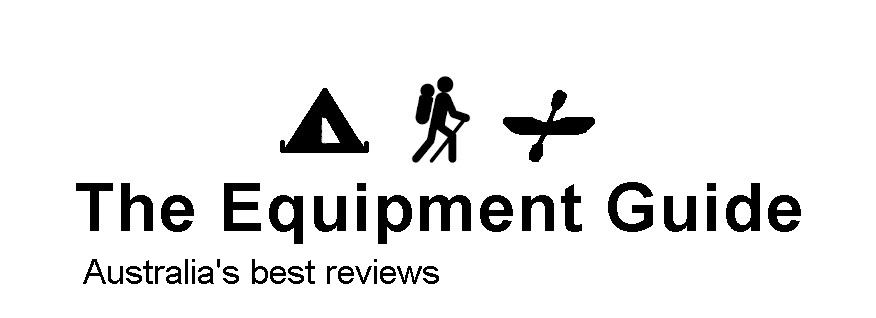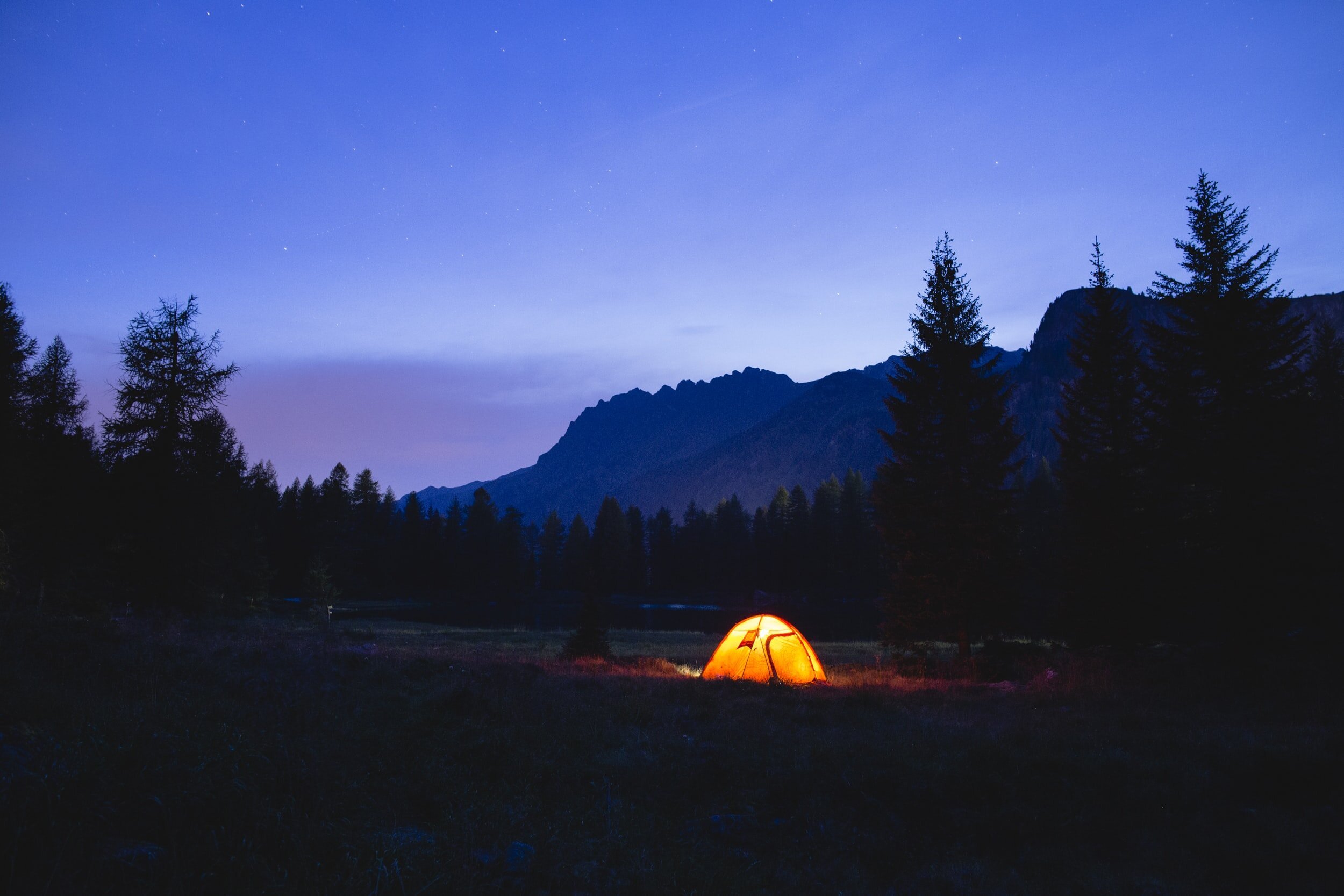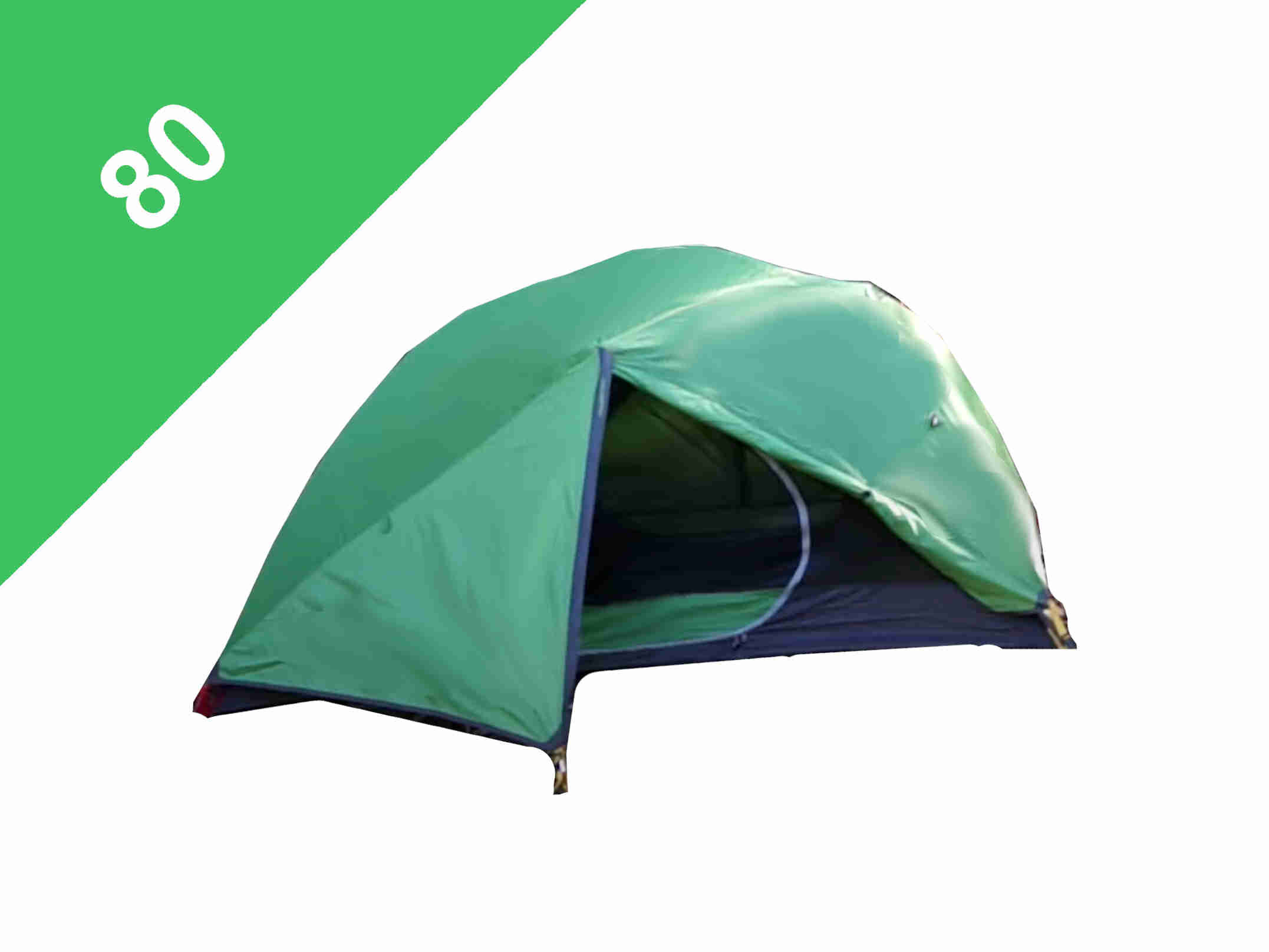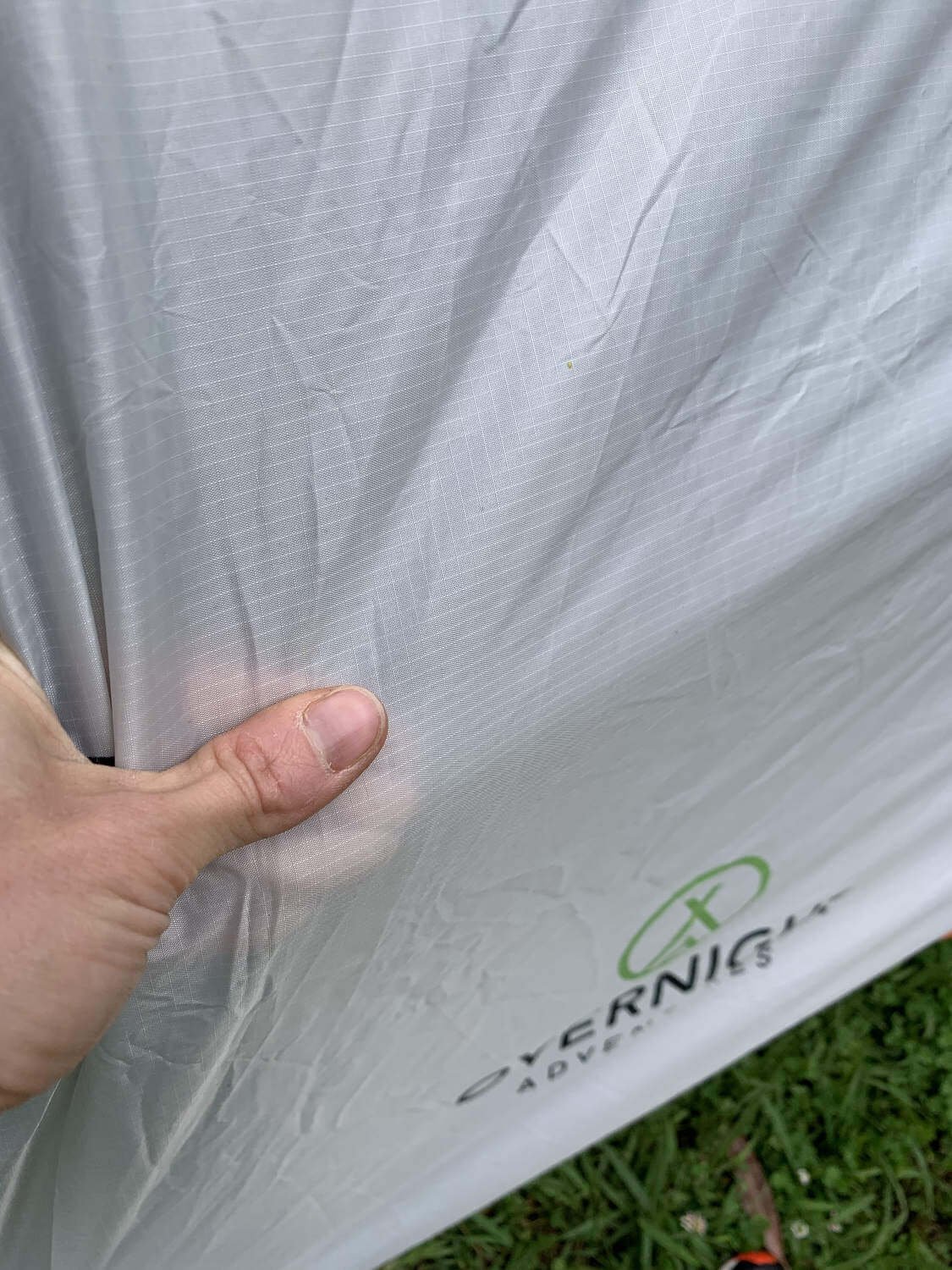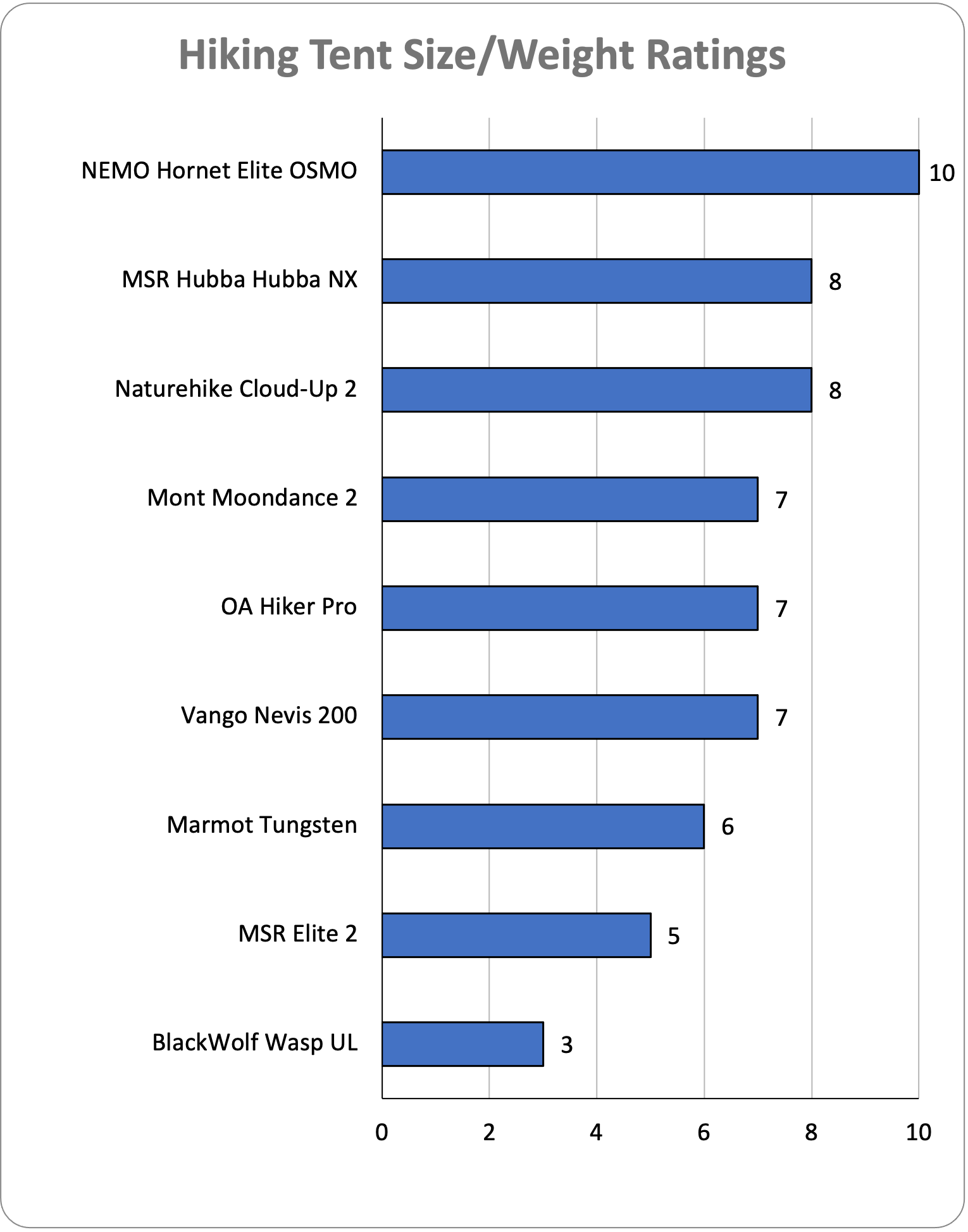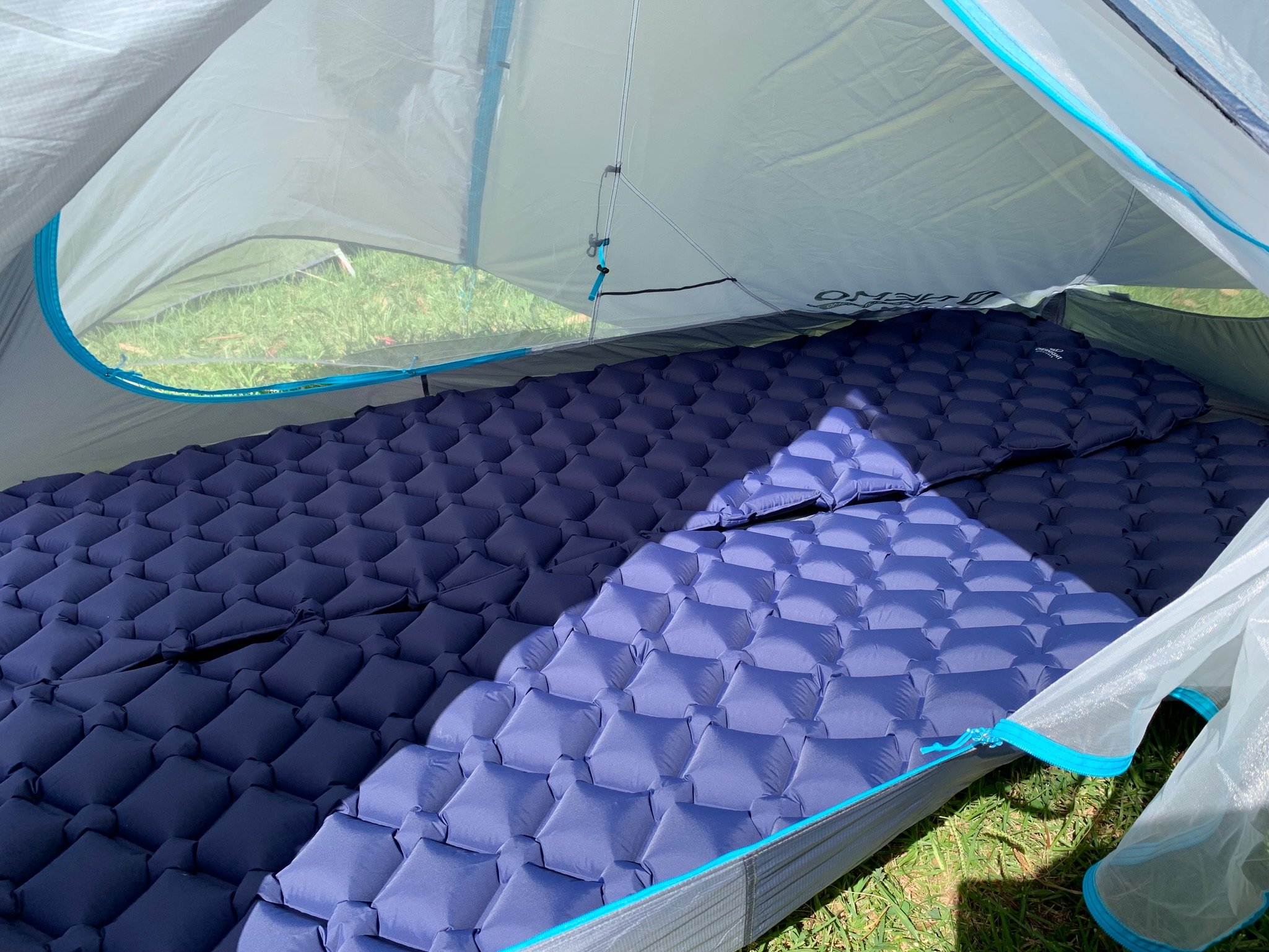Best Hiking Tent Australia 2024
We have completed a rigorous review process to find out which is the best hiking tent Australia has to offer. All tents are 2 person hiking tents that are suitable for almost all Australian conditions. We have assessed over one hundred of the best hiking tents and selected key products in each category to review. Watch the video breakdown, or read comprehensive reviews of each product via the ‘Read Full Review’ buttons below. After a larger camping tent? Check out our list of top family tents.
Updated 13th February 2024
Hiking Tent Reviews
MSR Hubba Hubba NX
Price At Time Of Writing | $945.16
Overall Rating | 95
Comfort | 9
Construction | 9
Features | 9
Size/Weight | 8
Versatility | 10
Packed Size - 46x15cm
Weight - 1.8kg
Sleeping Size - 2.5sqm
Pros - Comfortable, light, liveable
Cons - Price
Overall - A great allrounder
Nemo Hornet Elite OSMO
Price At Time Of Writing | $899.91
Overall Rating | 94
Comfort | 9
Construction | 9
Features | 9
Size/Weight | 10
Versatility | 7
Packed Size - 48x10x5cm
Weight - 0.936kg
Sleeping Size - 2.5sqm
Pros - Extremely lightweight, easy setup
Cons - Small, expensive, delicate
Overall - Excellent for when light weight is key
Mont Moondance 2
Price At Time Of Writing | $829.95
Overall Rating | 93
Comfort | 10
Construction | 9
Features | 9
Size/Weight | 7
Versatility | 8
Packed Size - 49x15cm
Weight - 2kg
Sleeping Size - 2.9sqm
Pros - Quality construction, spacious
Cons - Price
Overall - Excellent spacious tent
OA Hiker Pro
Price At Time Of Writing | $349.95
Overall Rating | 89
Comfort | 7
Construction | 8
Features | 8
Size/Weight | 7
Versatility | 9
Packed Size - 48x15cm
Weight - 2.1kg
Sleeping Size - 2.8sqm
Pros - Liveable, compact, price
Cons - Few internal pockets
Overall - Great value allrounder
MSR Elixir 2
Price At Time Of Writing | $499.00
Overall Rating | 88
Comfort | 8
Construction | 8
Features | 9
Size/Weight | 5
Versatility | 8
Packed Size - 51x17cm
Weight - 2.7kg
Sleeping Size - 2.69sqm
Pros - High-quality construction, considered features
Cons - Weight/size
Overall - A versatile choice prioritising comfort over lightweight
Marmot Tungsten
Price At Time Of Writing | $521.00
Overall Rating | 85
Comfort | 8
Construction | 7
Features | 8
Size/Weight | 6
Versatility | 6
Packed Size - 54x22cm
Weight - 3kg
Sleeping Size - 3.2sqm
Pros - Large living space
Cons - Weight/size
Overall - Better suited for short trips & camping
BlackWolf Wasp UL
Price At Time Of Writing | $299.00
Overall Rating | 80
Comfort | 6
Construction | 7
Features | 9
Size/Weight | 3
Versatility | 5
Packed Size - 54x22cm
Weight - 3kg
Sleeping Size - 3.2sqm
Pros - Extra large space
Cons - Weight, lack of ventilation
Overall - Heavy for hiking, ok for camping
Naturehike Cloud-Up 2
Price At Time Of Writing | $209.00
Overall Rating | 73
Comfort | 5
Construction | 3
Features | 4
Size/Weight | 8
Versatility | 3
Packed Size - 40x13cm
Weight - 1.8kg
Sleeping Size - 2.6sqm
Pros - Price, light
Cons - Space, lack of storage
Overall - Not enough storage space
Vango Nevis 200
Price At Time Of Writing | $235.00
Overall Rating | 72
Comfort | 2
Construction | 5
Features | 5
Size/Weight | 7
Versatility | 3
Packed Size - 46x15cm
Weight - 2.0kg
Sleeping Size - 2.6sqm
Pros - Price
Cons - Liveability, setup, space
Overall - Living space isn't enough
Watch our in-depth analysis by category
Watch our in-depth analysis by category
Advice we’d give to a friend
The Basics
How important is weight? - Weight does make a big difference to your hiking enjoyment; however, it’s not necessarily the defining feature you should look for. Some models reduce weight by cutting back on the sleeping size or quality, but the best lightweight hiking tents don’t. In our view, a good quality tent weighing around 2kg is light enough. When we analyse weight, we’re looking at the typical trail weight of the tent (eg. what we’d actually take hiking, which excludes items like footprints, non-essential pegs etc).
How many ‘season’ tent do I need? - In almost all conditions in Australia, a 3-season tent is best. 4-season tents are more for very cold/snowy conditions, so unless you are planning on hiking in Tasmania in winter, 3 is enough. Another thing to consider is that 4 season tents trap the heat and can get very hot in the warmer months which is when most of us are hiking anyway. All tents reviewed are 3-season, 2-person hiking tents for this reason.
Are hiking tents easy to set up? - Yes. Almost all the models we tested take only a couple of minutes to set up. The best hiking tents are very cleverly designed and easy to use.
What features are important? - In terms of cosmetic items, we’d want something with double vestibules for a bit of extra storage space, single or double pole setup, and at least 2 internal pockets. Weight, durability and a comfortable sleeping space are obviously the other key features that make up the best hiking tents in Australia, which we talk about in our comprehensive hiking tent reviews by category below.
Budget
When it comes to 2 person hiking tents we think you can get something decent without dropping a ton of cash. There are always exceptions to the rule but at the time of writing we could break the market into three categories:
Over $500 - This will typically get you the best lightweight hiking tents.
$200 to $500 - These tents are still great and not really that much different to the high-end models. There are some really great options in this price range as well.
Under $200 - Typically speaking, these tents are cramped or made from cheap materials that can fall apart. We suggest spending a bit more so you don’t regret your purchase.
Think about how will you use it
Are you going to only use it for hiking or camping as well? Will you go on short hiking trips or long trips? These are important factors to consider if you are going to get an allrounder, pure hiking tent or something better suited to camping.
Ratings By Category
Method
After reviewing the market we pick what we think will be the best hiking tents in each category from a variety of retailers. Each product selected gets 50 points automatically just for being selected. We then perform field tests and in person assessments to rank them out of 10 on the following categories: Comfort, Construction, Features, Size/Weight and Versatility.
Rankings are adjusted or weighted based on importance and how much they vary e.g. some categories will be categorised from 1 to 10 whereas others 4 to 9 etc. but there are sometimes outliers as well. We have tried our best to paint an accurate picture of how we rate each tent overall and why.
If you are looking for the best hiking tent in Australia, this is where we hope to provide you with all the details. We believe good hiking tent reviews should provide you with all the info you need to decide.
Comfort
Comfort looks at the size of the sleeping space, including these three main elements: floorspace, headroom and layout of the design.
There can be quite a bit of difference in this area. The Vango Nevis 200 for instance, has so little room that two people must lie head to toe. The Naturehike Cloud-Up 2 review has a design that has sloped walls, which reduces the already cramped space. For that reason, we wouldn’t buy either of those. In the mid-range and best hiking tents in Australia, there isn’t a great deal of variation, though. For instance, the OA Hiker Pro is a little bit shorter than some of the other models, and the Nemo Hornet has less room at the feet, but these are fairly minor differences. In our view, a spacious, symmetrical space is better, but it is not the be all and end all.
Vango Nevis 200’s cramped interior
MSR Hubba Hubba NX has a comfortable space
Construction
Construction essentially looks at materials used and craftmanship. Fabrics and pole materials play a massive role in how durable it will be. There is usually a trade-off here between weight, quality and cost.
Strong aluminium poles are important, as fibreglass tends to snap, which is the last thing you want when you are in the middle of the bush. Ripstop waterproof materials with a decent PU (1200+) are also going to keep you dry and will be strong. These are probably the main things we suggest looking out for when looking for the best hiking tents. Some of the best hiking tents have thicker gauge poles, like the Mont Moondance 2, a higher denier (density) fabric or better cinch straps, which can help with durability. On the flip side, budget models such as the Naturehike Cloud-Up 2 or Vango Nevis 200 have some of these features, but the design and layout of their poles make the overall structure weak.
Mont Moondance 2 Quality Poles
OA Hiker Pro Ripstop Fly
Features
Features look at the more cosmetic liveability features such as the number of vestibules, privacy screens, number of pockets and ease of setup.
Important things to look out for here are double vestibules, given that it’s a 2-person tent, as they provide extra space for each person to store their hiking pack or other items. A single-pole setup is handy, as is having a few pockets to put a head torch or other things you want close by. Privacy screens are also nice to have. All of the mid- to high-range hiking tents we reviewed have most of these features. The Vango Nevis 200 was a bit challenging to set up, and the Naturehike Cloud-Up 2 has one very narrow vestibule and is light on features.
OA Hiker Pro Single Pole Setup
The MSR Elixir 2 has pockets on the top and sides, but not on the doors
Size/Weight
Size/weight looks at the weight in kilograms and the packed size, i.e., how much room it will take up in your pack.
The Nemo Hornet is the clear standout here. At only 0.936kg it’s the best in terms of being a lightweight hiking tent if you are looking for something to use purely for hiking. Of the mid- to high-range tents, the Marmot Tungsten is perhaps a bit bulky, measuring 54x18cm. The Naturehike Cloud-Up 2 is lightweight, but it’s important to note that it does this to the detriment of quality in other areas. The BlackWolf Wasp UL is 3kg, so too heavy for hiking any great distance in our view. All the others are fairly comparable. The best lightweight hiking tents don’t sacrifice weight for quality.
Marmot Tungsten vs Nemo Hornet Size
Versatility
This category looks at whether we would use the tent for short hiking trips, multi-day hiking trips or just camping. A good all-rounder can be used for all three.
With a spacious interior and lightweight package, the MSR Hubba Hubba NX is a great all-rounder that can be used for anything. For its price, the OA Hiker Pro is another good, versatile option with plenty of headroom. BlackWolf Wasp UL is probably a bit heavy for multi-day trips, as is the Marmot Tungsten with its bulky size. The budget hiking tent options we reviewed could be used for short hiking trips, but comfort will be an issue. There are small differences between the top brands, as you can see from the below images.
Mont Moondance has room for rainy days and windows for ventilation
Nemo Hornet has two wide, mesh doors
Overall Results
About Our Testing Process
Here at The Equipment Guide, we write reviews for Australians with the goal of providing genuine personal assessments of the best products on the market right here at home. We do detailed research including field tests to make an informed judgment and help you get a better understanding of what is out there.
All products are reviewed and ranked in a methodical and careful manner and we assess them on relevant key features. We do not accept free products from manufacturers.
Our mission is simple: To create Australia’s best outdoor gear reviews.
Afterword
We hope you enjoyed our reviews of the best lightweight hiking tents in Australia!
Really most of the hiking tents we reviewed were great and you don’t have to spend a bundle to get something that will be great for Australian conditions. If you would like us to review a product or have any feedback we’d love to hear from you, feel free to drop us a note.
If you do purchase and are out in your hiking tent in Australia please share some pics with us — we’d love to see you in action.
